Most of the whey protein powders on the market contain either junk ingredients such as artificial sweeteners or are processed in a way that reduces the protein’s bioavailability. That’s one of the reasons why I haven’t always made protein powders a part of my diet and fitness routine.
In the fall of 2022, I met Brad Kearns — the person behind B.Rad Grass-Fed Whey Protein + Creatine — and had the opportunity to try his vanilla bean-flavored whey protein isolate.
Impressed by the quality of its ingredients and the pleasant flavor of real vanilla bean, I decided to incorporate Whey Protein + Creatine into my supplements stack.
Then a few weeks ago, I tried the new cocoa bean-flavored version and liked it even better (I love the taste of real cocoa powder).
In this article, I’ll share why I think B.Rad Whey Protein + Creatine is one of the best whey protein powders available, and I’ll talk about how (and why) I use it to support my healthy lifestyle.
B.Rad Whey Protein + Creatine Superfuel Review
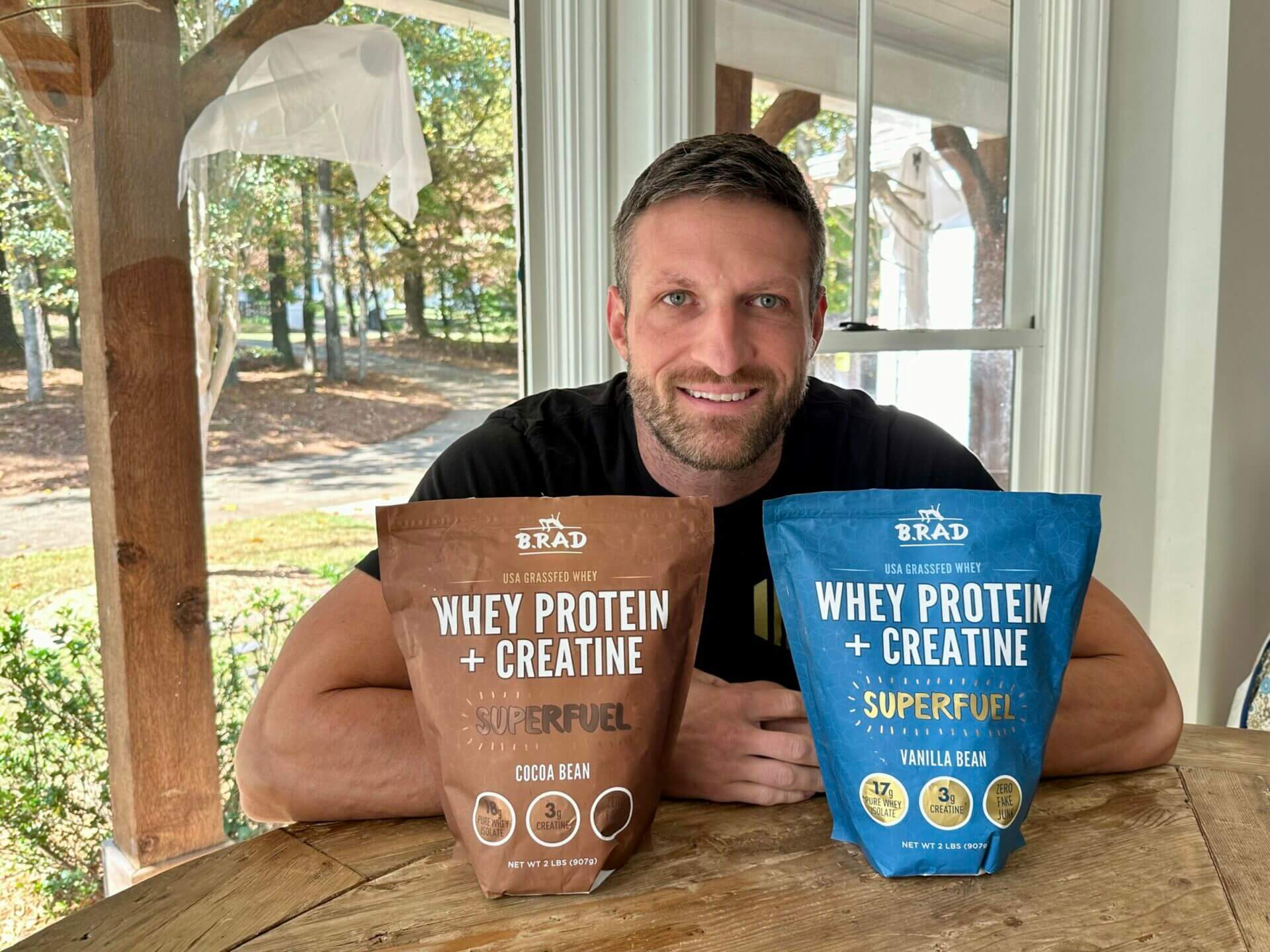
Pros
- Made from cows raised on small farms in Wisconsin.
- Micro-filtered and cold processed, instead of being derived from heat or high-pressure processing.
- Contains 3 grams of creatine for optimal muscle performance.
- No added fillers, preservatives or artificial sweeteners.
- Mixes easily with water or milk.
Cons
- The cows are fed a mixture of grass, grain and corn as needed during the winter months.
- Contains traces of sunflower lecithin.
- Relatively high price per serving, compared to lower-quality options.
Ingredients
| Vanilla Bean | Cocoa Bean | |
|---|---|---|
| Main ingredients | Whey protein isolate, creatine monohydrate | Whey protein isolate, creatine monohydrate |
| Flavors | Organic Madagascar vanilla bean extract | South American cocoa bean |
| Sweeteners | Organic cane sugar | Stevia extract |
| Other | Traces of sunflower lecithin | Traces of sunflower lecithin |
| Protein per serving | 17 grams | 18 grams |
| Carbs | 4 grams | 4 grams |
| Sugars | 4 grams | Zero |
One of the most important aspects of any processed food — and yes, whey protein powder falls into that category — is the type and quality of the raw ingredients used to produce it.
First off, B.Rad’s whey protein powder is made from the milk of dairy cows raised on small family farms in Wisconsin, a key differentiator from most other protein powders on the market. I appreciate that the company went out of its way to find domestic sources for their ingredients, which don’t have to be shipped around the globe.
Just as importantly, the product is made from whey protein isolate as opposed to the less pure whey protein concentrate. For context, whey protein isolate is 90-95% pure, whereas whey protein concentrate is only about 70-85% pure. The latter also contains residual fat and lactose, which can cause digestive issues in people who are lactose-intolerant.
Another unique selling point of B.Rad’s whey protein is that each serving contains three grams of creatine monohydrate, which is one of the most-studied supplements in the context of improving athletic performance.
I’m a huge fan of creatine and consume it daily to improve my exercise performance and recovery. However, my usual creatine serving size is five grams, and I wish the company would bump up the amount per serving. I know that too much creatine can lead to loose stools, but I’d argue that five grams won’t cause issues for most people.
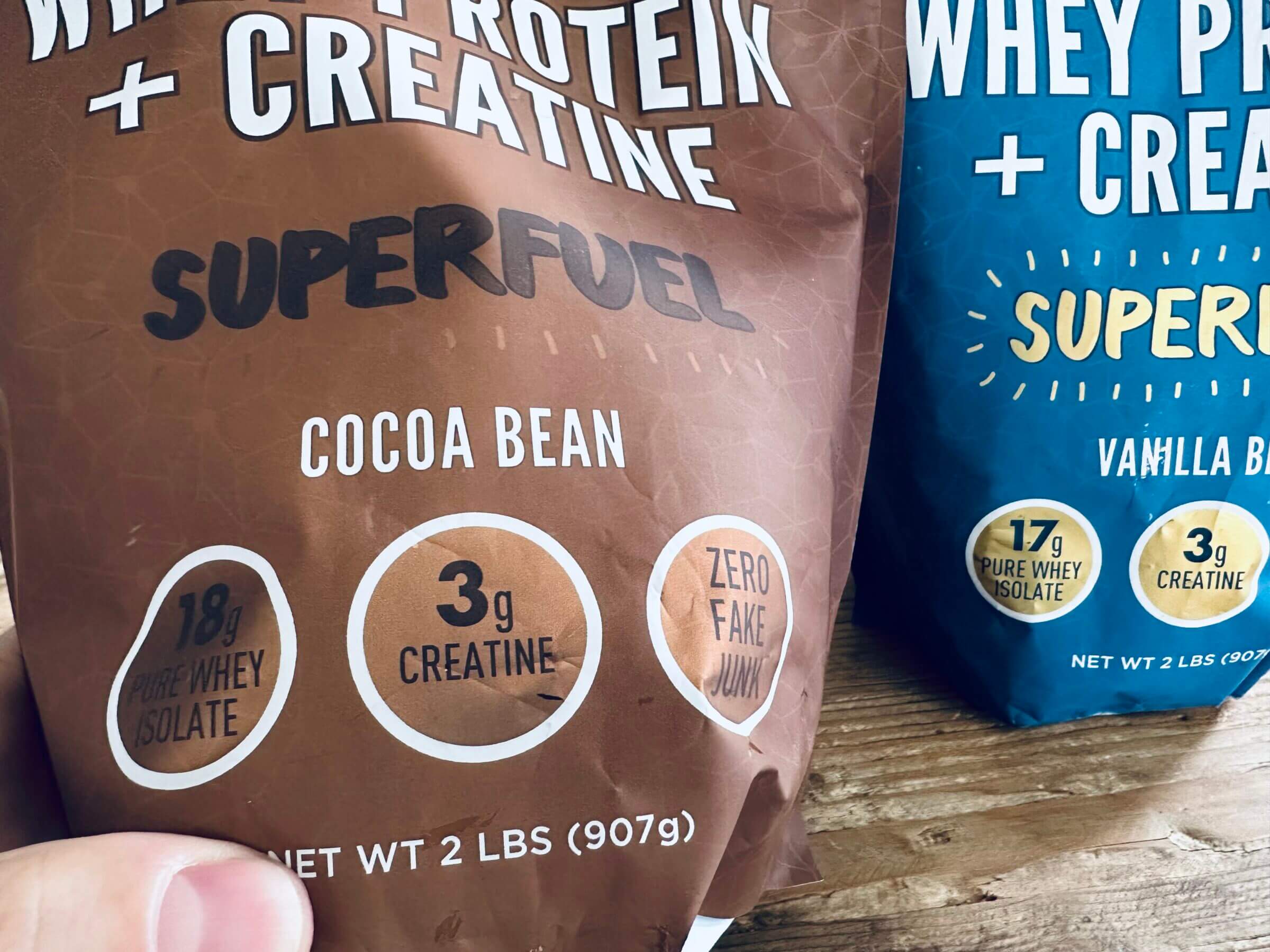
In addition to whey protein isolate and creatine monohydrate, the vanilla bean flavored version contains organic Madagascar vanilla bean extract (instead of lab-made flavors that are often sold as “natural” flavors) and organic cane sugar.
The inclusion of that organic cane sugar may be worth noting if you’re following a strict ketogenic diet, but it’s a better option than the artificial sweeteners used in competing products.
The cocoa bean version of Whey Protein + Creatine contains South American cocoa bean and stevia extract instead of organic cane sugar. So, if you follow a strict no-added-sugar policy, the cocoa bean-flavored protein might be your best bet.
There is one ingredient in both flavors that health purists may object to. That’s sunflower lecithin, which helps bind the ingredients together.
I’m not a fan of seed oils and plant-based fats, and sunflower lecithin is something that I wouldn’t recommend consuming in large amounts. But much like silica (sand), which you’ll often find as a flow agent in supplements, I don’t think trace amounts are a health concern unless you suffer from severe metabolic dysfunction and must adhere to a “perfect” diet.
Processing Method
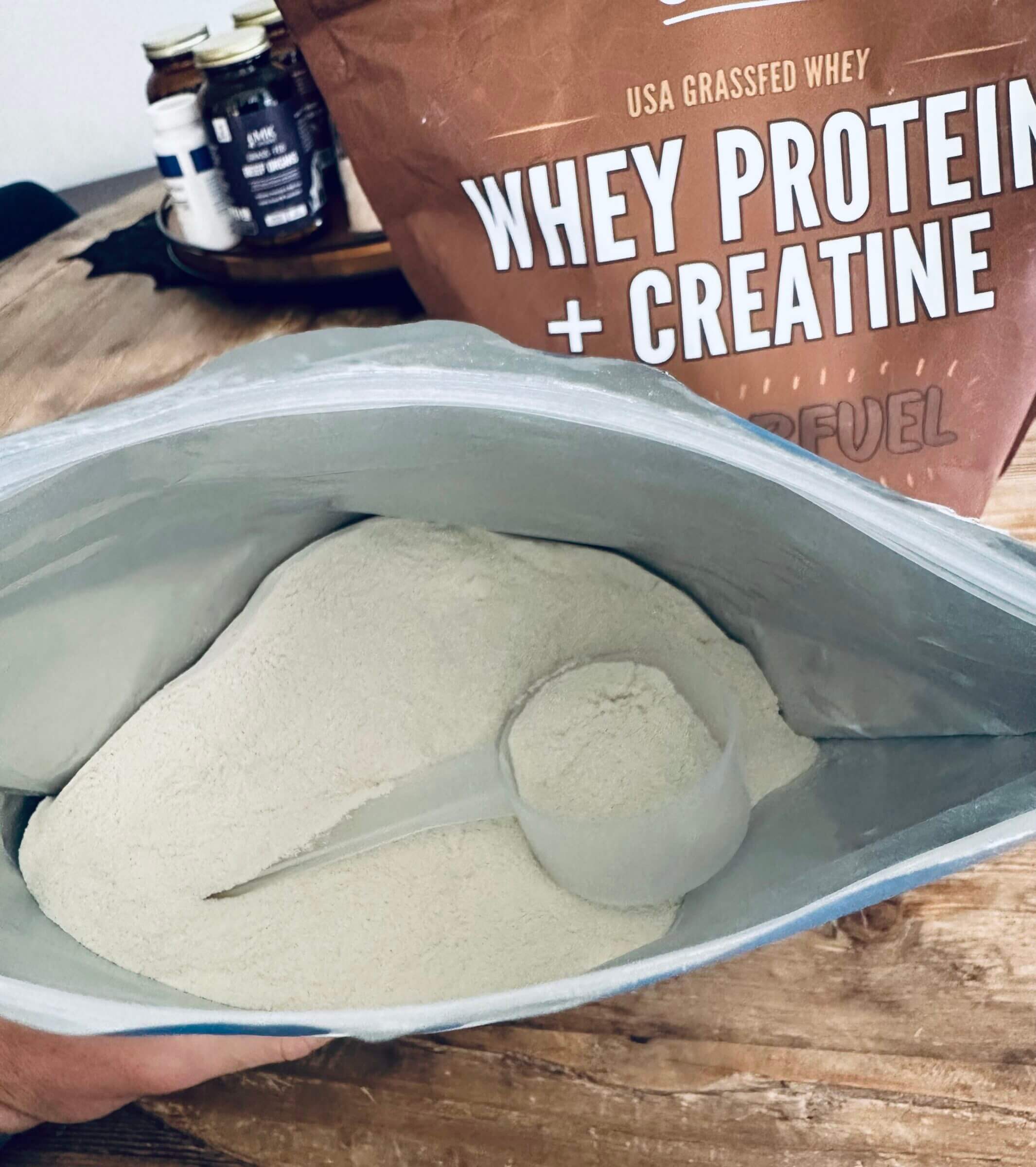
As I was preparing to launch my grass-fed beef organ supplements brand (MK Supplements), I learned about the various processing methods used by the supplements industry, and how they affect the quality and bioavailability of the final product.
Most of the less expensive whey protein powders on the market are manufactured using high heat or high pressure, both of which denatures many of the nutrients and reduces their bioavailability.
B.Rad uses neither of these processes. Instead, they leverage a combination of micro-filtration and cold-processing. This gentler approach is more expensive, but it better preserves the integrity of the nutrients in the final product.
It’s also worth mentioning that the whey used in this mix is made in a single day by generational artisan cheese makers. Most whey protein on the market is manufactured in a multi-step process (starting after the initial separation from cheese production) that can take days or weeks, thus reducing the freshness of the final product.
Mixability
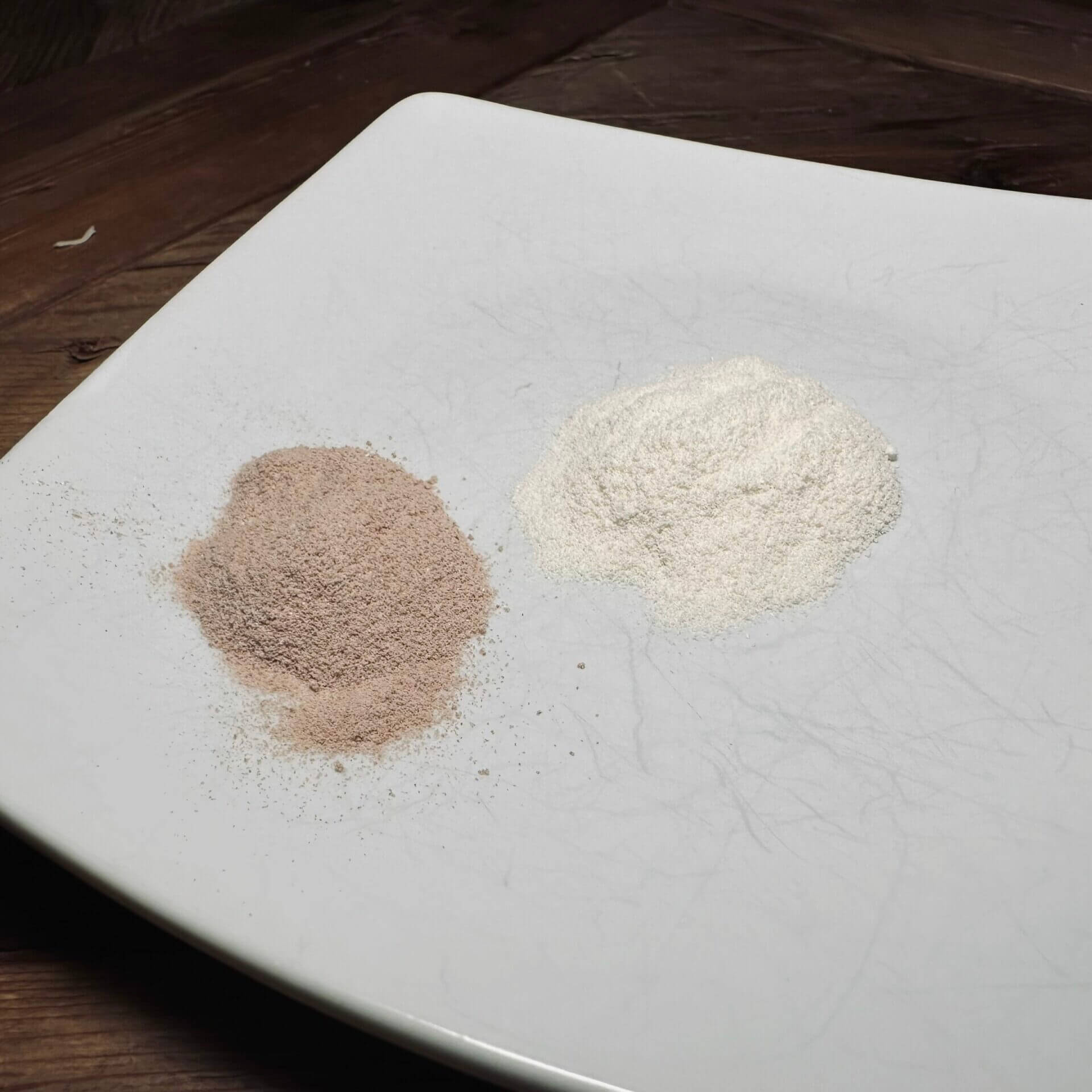
Some of the protein powders I’ve tried in the past clump together or stick to the bottom of my stainless steel shaker bottle, making it difficult to mix the entire powder (without wasting some of it). B.Rad Whey Protein + Creatine mixes easily with water or milk, and without forming clumps.
Taste
Both flavors taste delicious when mixed with raw milk. In fact, that’s how I enjoy this protein powder with breakfast. But if you’re not a fan of milk (or don’t have access to raw milk), B.Rad Whey Protein + Creatine also tastes delicious when mixed with filtered water. That said, it’s slightly less rich and creamy compared to when mixed with full-fat milk, as you might expect.
I like it either way, but since I consume raw milk daily, I decided to kill two birds with one stone and mix them.
Benefits
Protein is one of the most critical macronutrients for improving athletic performance, recovery and longevity. It’s vital to consume ample amounts of high-quality protein, and I recommend getting as much of it as possible from animal-based sources (as I explained in my article about the health benefits of plants vs. meat).
I get most of my protein from the muscle meat of responsibly raised ruminants (i.e., beef) and pastured eggs from our own hens, so I don’t “need” to use a protein powder. However, I appreciate having a high-quality option on-hand to boost my daily intake, especially on days I work out hard.
Aside from the protein itself, adding creatine — which is widely regarded as the most effective exercise performance supplement on the market — to the powder enhances its benefits significantly.
- Creatine delivers many of the essential amino acids and growth factors required to fuel and repair muscle tissue.
- It has been shown to have neuroprotective properties.
- Animal studies suggest that it can help reduce cell damage and inflammation resulting from injuries or diseases.
- There’s also evidence to suggest that creatine supplementation might benefit cognitive performance, especially under conditions that challenge the brain, such as sleep deprivation or oxygen deprivation.
The bottom line is that there are significant benefits associated with consuming high-quality protein sources (such as whey) and creatine. B.Brad Whey Protein + Creatine Superfuel offers a convenient way to boost your intake of both.
Pricing and Value
B.Rad Whey Protein + Creatine is a high-quality product, and the price tag reflects that. Both flavors retail for $71.95 per container, whether you buy it directly or get it on Amazon.
Since each container has 36 servings, you’ll pay approximately $2 per serving. That’s more than reasonable for a high-quality protein powder with creatine monohydrate, in my opinion.
If you purchase directly from the B.Rad website, you can use the promo code KUMMER to get 10% off your purchase of both single bags and their “Buy 3, Get 1 Free” deal.
Frequently Asked Questions
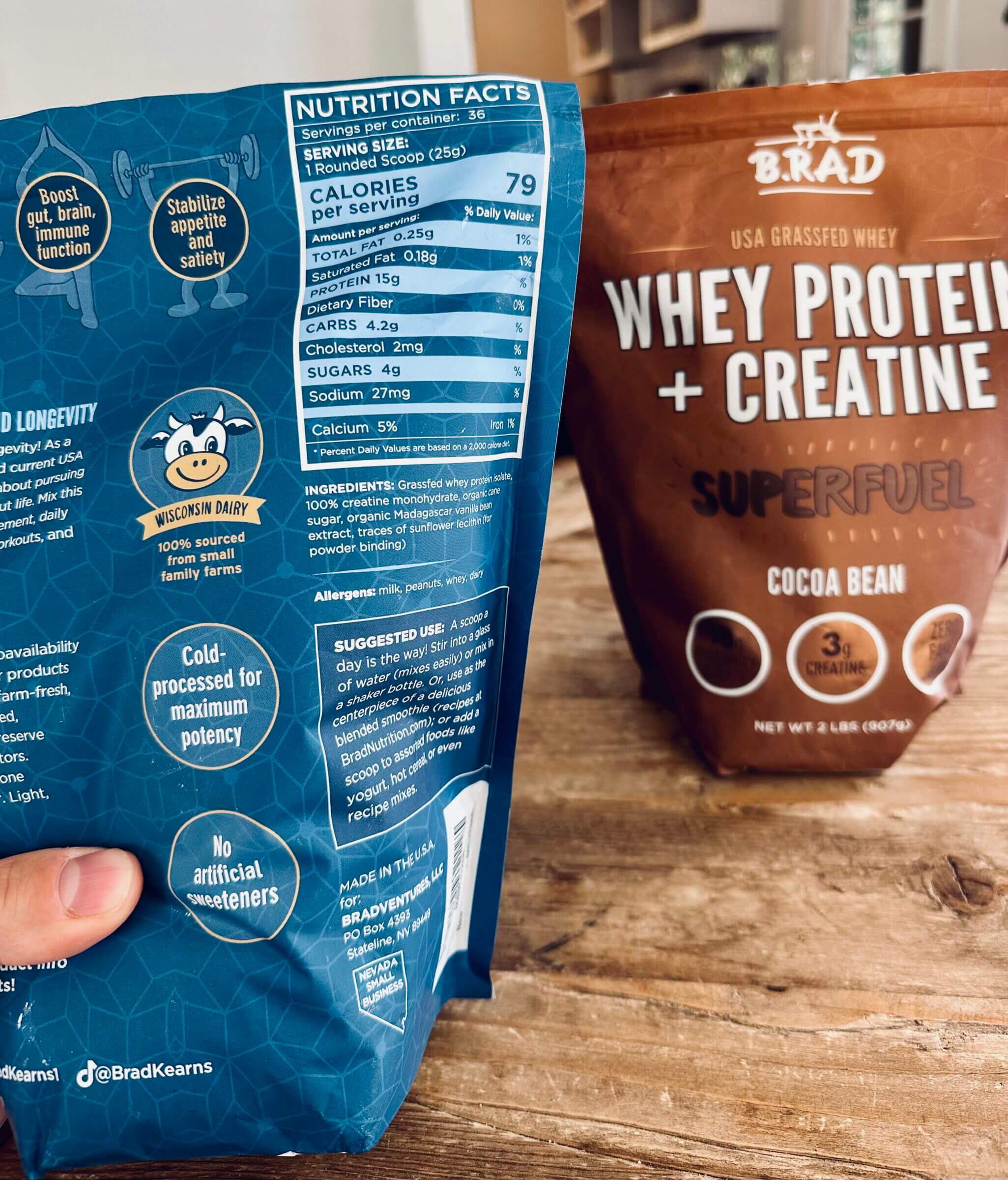
No, the milk used to make B.Rad Whey Protein + Creatine is from dairy cows that graze on pasture during the spring, summer and fall. In the winter, their diet is supplemented with a mixture of grass, grain and corn, as needed.
Obviously, I prefer products from 100% grass-fed cows. But small amounts of grain during winter won’t have much of an impact on the overall health profile of whey protein isolate.
Plus, I prefer knowing where the whey is coming from and how it was processed over a product from a large supplement manufacturer that sources whey from China and other far-off places (as is often the case).
B.Rad Whey Protein + Creatine has an incredibly high bioavailability rating of 104 and gets absorbed at a rate of 10 grams per hour. However, I firmly believe that consuming enough protein throughout the day is much more important than trying to time your protein intake.
But if your goal is optimal muscle protein synthesis, metabolic scientist Dr. Ben Bikman recommended (in a blog post about how to improve muscle recovery) to consume protein and fat in a 1:1 ratio right after your workout, and to avoid carbs until several hours after the workout.
That means you can have a serving or two of whey protein together with your first meal after exercise.
I usually consume whey protein with my first meal of the day.
B.Rad Whey Protein Review: Final Verdict
I aim to get most of the protein my body needs to function optimally from the meat and organs of responsibly raised animals (such as the rabbits we breed on the Kummer Homestead) and pastured eggs. However, it’s almost impossible to consume too much protein. In fact, I’d argue that most of us don’t consume enough protein regularly.
That’s why I appreciate the availability of high-quality protein powders like B.Rad Whey Protein + Creatine. The combination of clean and effective ingredients with its delicious taste and ease of mixing the powder with water or milk has made it easy to increase my daily protein consumption.
I ranked B.Rad’s Superfuel as the best overall why protein on the market in my roundup of healthiest protein powders, and think it’s the right choice for most people who are looking for a whey protein supplement.

Michael is a healthy living enthusiast and CrossFit athlete whose goal is to help people achieve optimal health by bridging the gap between ancestral living and the demands of modern society.
Medical Disclaimer
The information shared on this blog is for educational purposes only, is not a substitute for the advice of medical doctors or registered dieticians (which we are not) and should not be used to prevent, diagnose, or treat any condition. Consult with a physician before starting a fitness regimen, adding supplements to your diet, or making other changes that may affect your medications, treatment plan or overall health. MichaelKummer.com and its owner MK Media Group, LLC are not liable for how you use and implement the information shared here, which is based on the opinions of the authors formed after engaging in personal use and research. We recommend products, services, or programs and are sometimes compensated for doing so as affiliates. Please read our Terms and Conditions for further information, including our privacy policy.